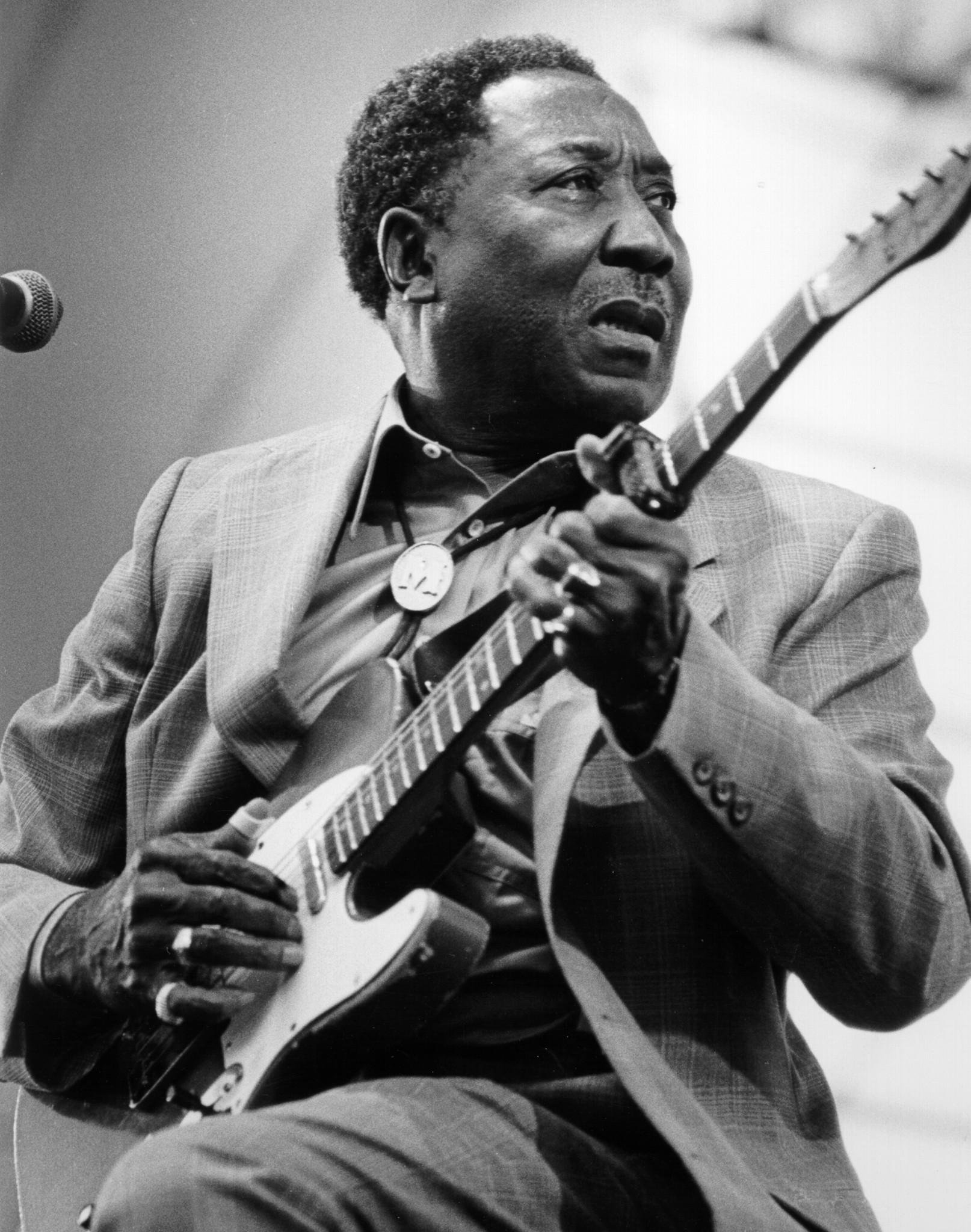Guitar: The Blues
Blues Guitar: overview
The Blues has been the greatest force in the direction of popular music for the last 100+ years. Every song in most genres have been influenced by the style and form of the blues. This effect couldn’t be more visible than in guitar playing. The way in which guitar is played in a band with solos, rhythm playing, and lyrical inflection (bending, sliding, hammer ons and pull offs) all come from the blues. Even the language that is used in rhythm and solo playing comes from the blues. Studying the blues is one of the most important things that a player of any level can do.
Read about the history of the blues, listen to the greats, learn how to play a blues bass line, chord part, and solo, and even write your own blues below.
Blind Lemon Jefferson
A Brief History Of The Blues by Ed Kopp
Muddy Waters
It is impossible to talk about the blues without first learning about its history. The following from an article by Ed Kopp. The original published article can be found on THIS PAGE.
The blues has deep roots in American history, particularly African-American history. The blues originated on Southern plantations in the 19th Century. Its inventors were slaves, ex-slaves and the descendants of slaves—African-American sharecroppers who sang as they toiled in the cotton and vegetable fields. It's generally accepted that the music evolved from African spirituals, African chants, work songs, field hollers, rural fife and drum music, revivalist hymns, and country dance music.
The blues grew up in the Mississippi Delta just upriver from New Orleans, the birthplace of jazz. Blues and jazz have always influenced each other, and they still interact in countless ways today.
Unlike jazz, the blues didn't spread out significantly from the South to the Midwest until the 1930s and '40s. Once the Delta blues made their way up the Mississippi to urban areas, the music evolved into electrified Chicago blues, other regional blues styles, and various jazz-blues hybrids. A decade or so later the blues gave birth to rhythm 'n blues and rock 'n roll.
No single person invented the blues, but many people claimed to have discovered the genre. For instance, minstrel show bandleader W.C. Handy insisted that the blues were revealed to him in 1903 by an itinerant street guitarist at a train station in Tutwiler, Mississippi.
During the middle to late 1800s, the Deep South was home to hundreds of seminal bluesmen who helped to shape the music. Unfortunately, much of this original music followed these sharecroppers to their graves. But the legacy of these earliest blues pioneers can still be heard in 1920s and '30s recordings from Mississippi, Louisiana, Texas, Georgia and other Southern states. This music is not very far removed from the field hollers and work songs of the slaves and sharecroppers. Many of the earliest blues musicians incorporated the blues into a wider repertoire that included traditional folk songs, vaudeville music, and minstrel tunes.
Without getting too technical, most blues music is comprised of 12 bars (or measures). A specific series of notes is also utilized in the blues. The individual parts of this scale are known as the blue notes.
Well-known blues pioneers from the 1920s such as Son House, Blind Lemon Jefferson, Leadbelly, Charlie Patton and Robert Johnson usually performed solo with just a guitar. Occasionally they teamed up with one or more fellow bluesmen to perform in the plantation camps, rural juke joints, and rambling shacks of the Deep South. Blues bands may have evolved from early jazz bands, gospel choirs and jug bands. Jug band music was popular in the South until the 1930s. Early jug bands variously featured jugs, guitars, mandolins, banjos, kazoos, stringed basses, harmonicas, fiddles, washboards and other everyday appliances converted into crude instruments.
When the country blues moved to the cities and other locales, it took on various regional characteristics. Hence the St. Louis blues, the Memphis blues, the Louisiana blues, etc. Chicago bluesmen such as John Lee Hooker and Muddy Waters were the first to electrify the blues and add drums and piano in the late 1940s.
John Lee Hooker
Today there are many different shades of the blues. Forms include:
Traditional county blues: A general term that describes the rural blues of the Mississippi Delta, the Piedmont and other rural locales;
Jump blues: A danceable amalgam of swing and blues and a precursor to R&B. Jump blues was pioneered by Louis Jordan;
Boogie-woogie: A piano-based blues popularized by Meade Lux Lewis, Albert Ammons and Pete Johnson, and derived from barrelhouse and ragtime;
Chicago blues: Delta blues electrified;
Cool blues: A sophisticated piano-based form that owes much to jazz;
West Coast blues: Popularized mainly by Texas musicians who moved to California. West Coast blues is heavily influenced by the swing beat.
The Texas blues, Memphis blues, and St. Louis blues consist of a wide variety of subgenres. Louisiana blues is characterized by a swampy guitar or harmonica sound with lots of echo, while Kansas City blues is jazz oriented—think Count Basie. There is also the British blues, a rock-blues hybrid pioneered by John Mayall, Peter Green and Eric Clapton.
New Orleans blues is largely piano-based, with the exception of some talented guitarists such as Guitar Slim and Snooks Eaglin. And most people are familiar with blues rock.
If you are interested in learning more about the history of the blues, there is an excellent two part video series on the history of the blues that was produced by the BBC.
Part 1 | Part 2
MORE RESOURCES









